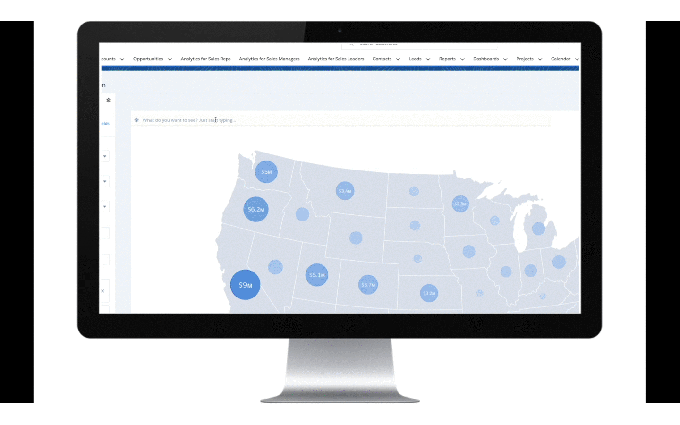
Salesforce introduced a new feature to Einstein Analytics today called conversational queries. It’s not conversational in the Alexa sense of conversation, at least not yet, but it does recognize the most common query types as you’re typing, providing faster access to data and analytics in a natural language query style.
“Now, with Conversational Queries, users can type phrases related to their data — such as “show me top accounts by annual revenue” or “rank accounts decreasing by annual revenue and billing country” — and instantly view answers in automatically configured dynamic charts,” Amruta Moktali, VP of Product for Einstein Analytics wrote in a blog post announcing the new feature.
While the tool has traditionally worked well for technical users to build queries, it requires a broad knowledge of how to find the information you’re looking for. By putting the queries in plain language, helping you build the query automatically, then building the charts based on the phrasing, it puts the ability to access analytics into more hands.
“The way we are doing it, we know the data structure, so rather than [forcing you to do the] guesswork, we actually suggest the correct query, making sure you are not making a mistakes,” Moktali explained. The idea is to reduce that hunting and pecking that typically goes into building a query and make it a more efficient process with fewer clicks and false starts.
“Traditionally, the process of creating charts has taken an average of 12 clicks and required a deeper understanding of chart building — how to create filters and what measures should go on each axis,” Moktali wrote. “Conversational Queries offers a new way to explore data and get answers to questions faster, eliminating clicks and the training required to create and drill down into charts,” she added.
While the Salesforce analytics was renamed with Einstein branding last year — it was originally called Salesforce Wave — the new functionality is not using artificial intelligence to make it work. Instead, Moktali says, it simply relies on the underlying metadata to build the queries using a simple old-school search trick.
Each customer customizes their Salesforce installation with their own terms, and this is available in the underlying program as metadata. The analytics program is simply tapping into that metadata to build queries and charts for users.
This isn’t trying to be fancy in a technology sense. It’s not even taking advantage of natural language processing or any type of artificial intelligence. It’s simply building on the metadata every customer has to create as part of their Salesforce install process and building the queries based on that underlying information.
Metadata is defined as data about data or how you identify your data elements. It’s been long used in online help and search tools inside enterprises to make it easier to locate documents in a search, but this is an interesting way to use the data to speed up query building and getting at information more quickly.
This new feature is available in general beta today. It should be released by the end of the year, Moktali says.
Featured Image: Getty Images



